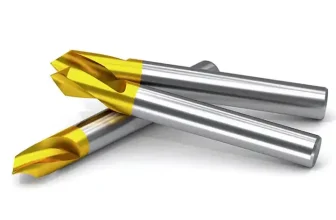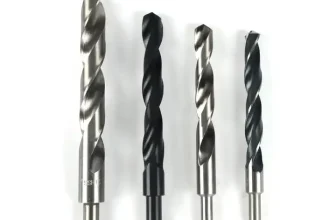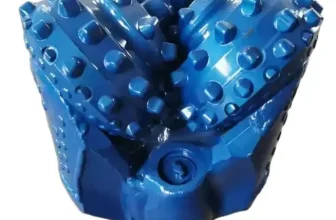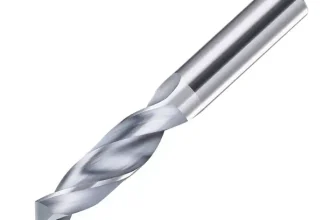PDC, an abbreviation for Polycrystalline Diamond Compact, refers to a
type of highly durable synthetic diamond product widely used in the
drilling industry. PDC Drill Bits are specially crafted drill bits
embedded with such diamond tips that allow for the efficient carving and
drilling into the earth’s crust. Known for their sturdiness and
durability, these drill bits have become an integral tool in various
drilling operations. Their main function is to bore holes into the
ground for exploration or extraction of natural resources such as oil
and natural gas. They offer a significant degree of precision and
high-performance drilling which makes them indispensable in the drilling
industry. The continued evolution in the design and manufacturing
process has resulted in various types of PDC Drill Bits that cater to
different drilling situations and environments.
Importance in the drilling
industry
PDC (Polycrystalline Diamond Compact) Drill Bits play a crucial role
within the drilling industry. Their key importance hinges on their
excellent drilling rate and longevity in various ground formations. This
drilling equipment can power through multiple layers of the earth’s
crust with efficiency and precision, often outpacing traditional drill
bits. Used in industries such as oil and gas, geothermal, mining and
construction, PDC Drill Bits contribute significantly to the exploration
and extraction of vital natural resources. Their high-performance
capabilities, coupled with reduced down-time, increases overall
productivity making them an essential tool in the drilling industry’s
arsenal.
Origins and Evolution
of PDC Drill Bits
Initial development
The genesis of PDC (Polycrystalline Diamond Compact) drill bits can
be traced back to the 1970s, specifically in 1973, when synthetic
diamond technology became ripe for commercial exploitation. Synthetic
diamond drill bits first emerged as cylindrical inserts before evolving
into more advanced table-type Polycrystalline Diamond Compact bits
thanks to the research and development efforts geared towards improving
drilling performance.
The breakthrough moment came when General Electric fused a layer of
synthetic diamond to a tungsten carbide substrate, creating the first
hybrid PDC cutters suitable for commercial industrial applications. This
marked the turning point for PDC drill bits, which quickly gained
prominence for their aptitude in drilling subterranean formations.
Interestingly, the first generation of PDC drill bits were not
instant successes. Early models were prone to rapid wear and had
shortcomings in thermal stability, making them less practical in various
drilling settings. However, the recognition of their potential sparked
relentless innovation, solving these initial challenges and shaping PDC
drill bits into the indispensable tools they are in today’s drilling
industry.
Technological advances
and improvements
Over the years, PDC Drill Bits have undergone significant
technological advancement and improvements that have drastically
enhanced their efficiency and durability. This periodic transformation
is largely attributed to the drilling industry’s relentless pursuit of
better, faster, and more reliable drilling tools.
One of the most notable advancements has been the design innovation
of the cutters. Clever design and computational models have allowed for
the increased performance of PDC drill bits by improving cutter
placement optimization. The development of advanced thermally stable PDC
cutters that can maintain structural integrity under high temperatures
has also been a game-changer in the industry.
In-depth research and testing went into improving the wear-resistance
of the PDC bit, a prime requirement in harsh drilling conditions. Some
introduced diamond-like carbon coating on the drill bits, making them
much more durable and effective in high abrasive environments.
The evolution of 3D designs and modeling has been of immense
significance in the evolution of PDC Drill Bits. It facilitated optimal
hydraulic designs and cutter placements to increase the drilling
performance while reducing the bit vibrations.
Lastly, the adaptation of data collecting instruments or sensors,
which provide real-time information about the drilling process, further
enhanced the efficiency and lifespan of PDC drill bits. These sensors,
placed within the drill bit, enabled companies to monitor bit wear and
damage and make the necessary adjustments promptly.
These technological advancements and improvements have reshaped the
landscape of drilling technologies, transforming the PDC drill bit from
a promising prototype into an industry staple.
Design and
Construction of PDC Drill Bits
Material components
Polydiamond Crystalline (PDC) drill bits are typically composed of
several main components that contribute to their unique resilience and
cutting performance in drilling operations. The most prominent and
important of these components is the cutting element, which is usually
made from a composite of synthetic diamond grit and a binder, most
commonly a durable carbide substrate. This synthetic diamond material is
not only incredibly hard, but also able to withstand the extreme
temperatures and pressures encountered while drilling.
The body of the bit is typically made from steel or a matrix material
composed of tungsten carbide grains and a binding alloy. Steel-bodied
PDC bits are generally more robust and resistant to impact, while
matrix-bodied bits have a strong resistance to abrasion and wear.
The other vital part of a PDC drill bit is the diamond table, where
the actual cutting action takes place. This is often larger in size than
those found in standard bits, rendering improved cutting power and wear
resistance. The choice of materials for the bit body and cutter greatly
influences the bit’s performance, lifespan, and effectiveness in
different drilling environments and applications. It’s also worth noting
that every part of a PDC drill bit’s design often stems from the choice
of these crucial material components.
Structural details
Cutting structure
The cutting structure of PDC (Polycrystalline Diamond Compact) drill
bits is a fundamental element in their design, highly influential on
performance and longevity. Made up of several diamond-enhanced cutters
attached to carbide substrates, the cutting structure is the “teeth” of
the bit that digs into and breaks up the formation being drilled.
Each PDC cutter has a layer of synthetic diamond bonded onto a
tungsten-carbide substrate through a high-pressure, high-temperature
sintering process. The diamond section – the part that engages with the
rock – is tough, wear-resistant, and can handle extreme heat, making it
ideal for drilling through various formations.
These cutters are then mechanically set onto the bit in a precise
arrangement designed to optimize contact with the ground. Depending on
the specific requirements of the drilling project, these cutters can be
arranged into various shapes such as concave, convex, or flat profiles.
Each of these profiles presents advantages for particular drilling
conditions or formation hardness.
For instance, a concave profile is typically used for softer
formations, as it allows for a high rate of penetration, while a flat
profile is generally preferred for harder formations. The cutter layout
can also be adjusted to align with the desired aggressiveness or
smoothness of drilling operation.
In essence, the cutting structure is a meticulously engineered
function of the drill bit, tailored to meet specific drilling
applications. Its robustness, complexity, and intelligent design play a
significant role in the overall performance and success of PDC drill
bits in drilling operations.
Hydraulic design
The hydraulic design of PDC (polycrystalline diamond compact) drill
bits is another instrumental aspect that greatly influences their
overall performance. This design is primarily centered around
efficiently removing cuttings from the bottom of the hole, optimizing
cooling for the cutter, and reducing balling potential.
In a PDC drill bit, the fluid flow path is ingeniously engineered to
maximize cleaning and cooling. The drilling fluid, often a mixture of
water, clay, and various chemicals, is pumped down the drill pipe and
out through strategically located nozzles in the bit. These nozzles are
carefully positioned to guide the drilling fluid across the face of the
bit, clearing away the rock cuttings and cooling the diamond
cutters.
The hydraulic design also consists of features like junk slots, whose
main function is to facilitate the evacuation of cuttings. The size and
placement of these slots directly affect the cleaning efficiency of the
bit. Maximizing the area of these junk slots allows for a higher rate of
cuttings removal.
Moreover, the hydraulic horsepower (HHP), a measure of the energy
available to perform work at the bit, is also a critical part of the
hydraulic design. A balanced hydraulic design is one that matches the
HHP to the bit’s formation, drilling speed, and cutter loading
requirements.
In summary, an effective hydraulic design plays a pivotal role in a
PDC bit’s efficiency. From cutter cooling to debris removal, the drill
bit’s hydraulic characteristics have a profound influence on its
lifespan and overall drilling effectiveness.
Gauge pads and back-up
cutters
Gauge pads and back-up cutters are essential to the design and
functionality of PDC (Polycrystalline Diamond Compact) drill bits. These
specific components serve as the primary defense against wear and
abrasion, which are commonly experienced during the drilling
process.
Gauge pads are strategically placed on the exterior surface of the
drill bit. These extended portions are often manufactured with a hard,
wear-resistant material like tungsten carbide or polycrystalline
diamond. Their task is to maintain the bit diameter during drilling
operations, ensuring the bit remains within specified size limits and
does not undersize the hole. They also help stabilize the bit and
decrease unwanted vibration in the borehole.
On the other hand, back-up cutters, as their name implies, act as a
support system for the primary cutters on the PDC bit. They are
positioned directly behind the primary cutters and are designed to
engage with the rock bed if the primary cutters become dulled or
damaged. By doing so, they extend the working life of the PDC drill bit,
reduce the likelihood of bit failure, and contribute to the overall
drilling efficiency.
In conclusion, both gauge pads and back-up cutters have crucial roles
in enhancing the performance and longevity of PDC drill bits. The
precision in their design and placement significantly impacts the bit’s
reliability and effectiveness in diverse drilling situations.
Different types and sizes
PDC (Polycrystalline Diamond Compact) drill bits come in a diverse
range of types and sizes to suit different drilling needs, soil
conditions, and objectives. The variation in drill bit design primarily
depends on the geological formation and the end goal of the drilling
operation.
One key element that differentiates PDC drill bits is their size.
Drill bits range from small, only a few centimeters in diameter, to
large variants that can be up to 36 inches wide. The choice of drill bit
size depends on the application – smaller bits are often used for
starting a well, for example, while larger models are needed when
drilling through particular material types or performing operations such
as underreaming.
In terms of types, PDC bits can be categorized broadly into
matrix-body and steel-body. Matrix-body bits are made from a tungsten
carbide material that is very resistant to erosion and wear. This makes
them a good choice for harsher drilling conditions and applications
where long bit life is needed. In contrast, steel-body bits are more
ductile and less resistant to impact damage, making them more suitable
for softer, less demanding drilling conditions.
Within these categories, PDC bits can also be differentiated based on
their cutting structure. Some bits are designed with a high number of
small cutters, which gives a smoother, more consistent cutting
experience. Others include fewer but larger cutters, which can remove
material more quickly and are typically used in softer materials.
With this astonishing variety, the choice of PDC drill bits can be
tailored to the exact requirements of the application, thus increasing
the efficiency and output of drilling operations.
Function and
Application of PDC Drill Bits
How PDC Drill Bits work
Polycrystalline Diamond Compact (PDC) drill bits operate by shearing
through rock strata rather than employing the traditional crushing and
chipping action of other drilling technologies. These high-performance
bits are especially valuable in hard, abrasive rock formations where
other drill types could degrade or fail.
PDC drill bits are essentially a complex network of tiny, man-made
diamond cutters that are attached to a carbide substrate. These diamond
cutters function as the primary element in the drilling operation. As
the drill bit spins and applies force, these cutters shear through the
rock, resulting in an efficient and consistent drilling process with
less gauge wear and tear.
The shearing action of PDC drill bits requires less downwards force
and rotational speed than other drill types, increasing efficiency and
potentially reducing drill string failures. The efficient, continuous
cutting action also reduces the overall time required to drill through
particular sections of earth, which can further enhance operational
efficiency.
To maximize the performance of a PDC drill bit, it’s essential that
the drill bit is properly aligned with the borehole. Misalignment can
lead to uneven wear on the PDC cutters, which in turn can negatively
affect drilling performance and lifespan of the drill bit. An optimally
aligned PDC drill bit keeps weight distribution and cutting action even
across the bit face, prolonging its life and ensuring a more successful
and productive drilling operation.
Different drilling
situations and uses
Oil and gas drilling
The adaptability and performance characteristics of PDC drill bits
make them an essential tool in oil and gas drilling operations. A
primary advantage is their ability to drill through several different
rock formations, which is an integral aspect of most oil and gas
extraction expeditions.
PDC drill bits are also specifically designed to move through hard,
consolidated formations that are frequently encountered during oil and
gas drilling. High drilling speed and ultra-durability avoid
time-consuming and costly bit changes and ensure a steady and efficient
drilling process.
Furthermore, oil and gas drilling often involve extremely high
pressures and temperatures. The robust and heat-resistant composition of
PDC bits allow for reliable operation in such severe conditions. By
combating friction and consequent overheating, they contribute
significantly to operational efficiency.
Lastly, PDC bits benefit oil and gas drilling by supporting
directional drilling capabilities. This attribute helps in reaching
resources that are laterally distant from the drilling rig or located in
curved and horizontal well paths. Their abilities for extended reach,
maneuvering in tight directions, and steering control make PDC bits an
invaluable asset in modern oil and gas drilling operations.
Geothermal drilling
Whether you’re in the geothermal industry or an excavation
specialist, one cannot undervalue the role PDC drill bits play in
geothermal drilling operations. Geothermal drilling is a specialized
task that requires scientific precision, and for that, PDC bits have
proven indispensable.
In geothermal drilling operations, the goal is to bore into the
Earth’s crust to harness the vast thermal energy contained in the form
of heat within the Earth. This heat is further converted into energy
that can be used for residential and commercial purposes. PDC drill
bits, due to their design and material, thrive in the high-temperature,
high-pressure environments typical of geothermal drilling sites.
Geothermal wells often face hard, abrasive rock formations before
getting to the thermal reservoir. The diamond “teeth” of PDC drill bits
cut through these rocks efficiently without going blunt, making them the
preferred tool for this drilling venture. Moreover, PDC drill bits are
also used in the casing and cementing stages of geothermal drilling to
ensure the well is reinforced and cool enough for the geothermal plant’s
subsequent steps.
Each PDC bit can be tailored to suit the specific parameters and
challenges of a geothermal drilling project. This flexibility means that
drillers can choose a PDC bit that matches the hardness, abrasiveness,
and other characteristics of the rock to be drilled. As a result, PDC
drill bits have become a mainstay in geothermal projects worldwide,
highlighting their versatility and robust performance across different
drilling situations.
Mining and construction
In the realm of mining and construction, PDC drill bits have proven
to be invaluable tools owing to their superior drilling capabilities.
These industries require drill bits capable of penetrating hard, dense,
and rough materials, and achieving this with a high degree of precision.
PDC drill bits fit this description perfectly.
In mining operations, the process of ore extraction and the creation
of underground tunnels and passages demands the use of formidable
drilling equipment that can withstand extreme conditions. Here, PDC
drill bits, with their powerful diamond cutters, can drill through
various types of rock formations, including sandstone, limestone, and
even some types of granite. It is the exceptional hardness and thermal
stability of diamond that enable PDC bits to endure such harsh materials
and high drilling speeds, generating a smooth and precise drill
hole.
Similarly, in construction projects, PDC drill bits are frequently
employed for drilling foundation holes, creating anchor points, and
constructing necessary infrastructures like water wells. Their
structural robustness and efficient cutting performance significantly
reduce operation time and minimize errors during the drilling process,
thereby ensuring the structural integrity of the constructed
edifices.
The versatility of PDC drill bits, their various sizes and types, can
cater to the varying demands of these industries, from exploratory
drilling in mining to precision drilling in construction. Thus, PDC
drill bits are undoubtedly invaluable assets in the mining and
construction sectors.
Benefits and
Limitations of PDC Drill Bits
Efficiency and longevity
PDC drill bits are lauded for their impressive efficiency and
shelf-life. Primarily, their high-speed agilities contribute to a faster
Rate of Penetration (ROP) than traditional roller cone drill bits. With
this peculiar attribute, drilling operations are significantly
accelerated, thus saving time and resources. Additionally, these drill
bits exhibit a steady drilling performance irrespective of variances in
lithology – a feature that expedites the procedure.
Moreover, PDC drill bits possess exceptional longevity as they are
constructed from polycrystalline diamond compact (PDC), a highly durable
material. The toughness imbued by PDC not only facilitates longer bit
life compared to other types but also minimizes the frequency of bit
trips, reducing additional time and costs implicated in their exchange.
Thus, the combination of high-speed, relentless performance and
durability makes PDC drill bits an efficient choice in the drilling
industry.
Challenges and
necessary considerations
When it comes to the use of PDC drill bits, several challenges and
necessary considerations have to be taken into account. Firstly, PDC
drill bits are great for drilling in soft to medium formations, but when
it comes to harder, more abrasive formations, they may not perform as
well. Drilling in such conditions can lead to a quicker wear and tear on
the drill bits, making them less effective.
Secondly, PDC drill bits tend to be relatively costlier than their
roller cone counterparts which might limit their application in
situations where budget constraints exist. Furthermore, they must be
carefully matched to the drilling system and planned drilling parameters
for maximum efficiency. The failure to correctly match the drill bit to
the system can lead to suboptimal drilling performance, bit damage, or
even failure.
Thirdly, PDC bits are also vulnerable to heat and impact damage.
Therefore, drilling parameters like weight on bit and rotary speed must
be precisely controlled to avoid excessive overheating or sudden bit
failure.
Lastly, operations like coring or fishing can be more difficult with
PDC bits because of their one-piece design. Traditional roller-cone bits
can be disassembled, for example, to remove a fish, but PDC bits require
specialized techniques or tools.
All these factors make it clear that in as much as PDC drill bits are
revolutionary in the drilling industry, their application requires a
certain amount of proficiency and understanding. This will ensure not
only a safe operation but also the efficiency and longevity of the PDC
drill bits.
Conclusion
Summary of key points
Throughout the article, we’ve journeyed through the essential aspects
of PDC drill bits – their formation, design, function, pros, and cons.
We’ve learned that these are highly specialized tools made from
polycrystalline diamond compact material, a substance known for its
exceptional hardness and thermal stability. These attributes make PDC
drill bits the choice of equipment for various drilling applications,
particularly in the oil and gas, geothermal, mining, and construction
sectors.
Of particular note is their construct – intricate and mechanically
sophisticated, comprising cutting structures, a hydraulic design, and
gauge pads with back-up cutters. We also explored their numerous types
and sizes, each specific to the nature and demands of the drilling
operation.
Importantly, we highlighted the overall efficiency and longevity of
these drill bits, acknowledging their contribution to operational
productivity andcost reductions. Yet, we also discussed the limitations
surrounding these tools, specifically their poor performance in
unconsolidated formation and inability to withstand high-impact
operations.
Remember all these keys points as they demonstrate just how essential
PDC drill bits are to the drilling industry, not just today, but likely
well into the future given their adaptability and likely improvements
over time.
Future
prospects for PDC Drill Bits in the industry
The landscape of drilling is ever-changing and certain to become more
complex as we delve deeper into the earth’s crust in search of
resources. In an increasingly demanding industry, PDC drill bits are set
to play a vital role due to their proficiency in various drilling
applications, underpinned by their unique design and robust
construction.
A notable future prospect for PDC bits lies in the advancement of
material technology. Cutting edges that are even more durable and
wear-resistant will significantly increase the bits’ lifespan and
efficiency. Simultaneously, improvements in design are also anticipated,
particularly with regards to hydraulic design, which could further
enhance the drilling speed and overall performance.
Another promising prospect for PDC drill bits pertains to more
environmentally friendly drilling practices. With rising ecological
concerns, achieving resource extraction with minimal environmental
impact is a mounting priority. Given PDC bits’ incorporation of
synthetic diamonds, the creation of more sustainable designs is a
foreseeable development.
In the face of more complex drilling conditions, the adaptability of
PDC bits will continue to be tested. Still, given their strong track
record and consistent improvements, it can be confidently predicted that
PDC drill bits will maintain their crucial status in the drilling
industry, and possibly expand their usability into more diverse drilling
scenarios. As the industry continues to evolve, so will the capabilities
and applications of PDC drill bits.







